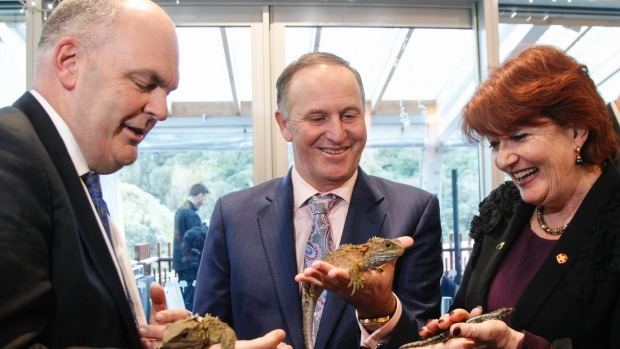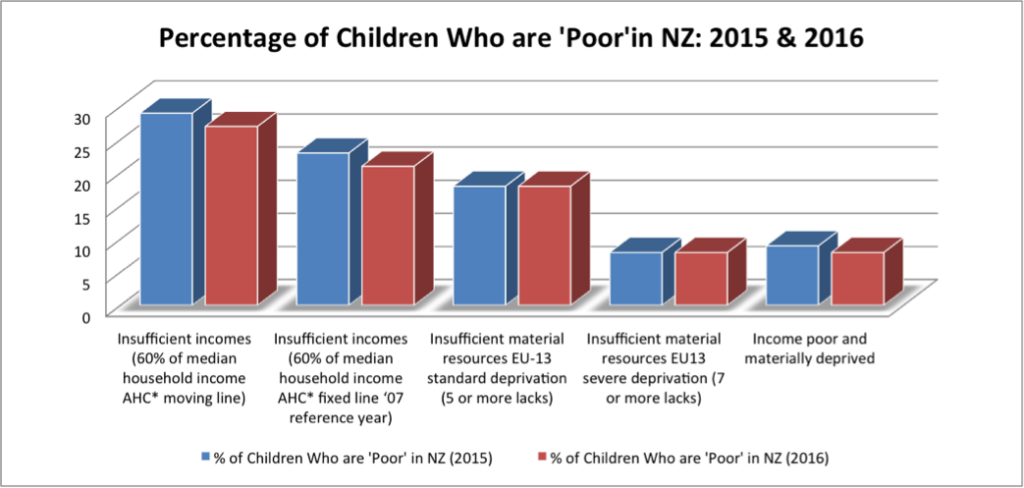Our Prime Minster says that it is too complicated to set a target to reduce child poverty. Apparently there are too many measures, and he has received advice from officials telling him to put this one in the too hard basket. We won’t dwell on his comparison between pest predators and children.
In our view (and clearly the view of the Children’s Commissioner) the Prime Minister has been getting poor advice. It is completely possible for the Government to have target, and such a target would be more robust than some of the Government’s existing targets. Having a child poverty target is commonplace overseas and indeed it is required by the United Nations. So the question is “what are you waiting for Prime Minister?”
Is a target plausible?
As Toby Manhire has comprehensively pointed out, we put a target on virtually everything else in government. The list of better public service targets is comprehensive, quite long, and some are even complicated!
Of course a target is only useful if you can measure what matters. We’ll discuss some potential child poverty targets below, but they are far less shonky than some of the Government’s existing targets. For example Better Public Service Target Result 1 is reducing long-term welfare dependence. As we have discussed previously this measure tells us nothing about the wellbeing of the families involved and whether they are better off, just that they are off welfare.
Pretty much every other country like us has managed to set a target – for example the UK. In fact we are should have a target; the UN Sustainable Development goals (which we’ve signed up to) require us to:
“ By 2030, reduce at least by half the proportion of men, women and children of all ages living in poverty in all its dimensions according to national definitions” [1].
It appears that the Government is hoping to avoid having to report on this Sustainable Development Goal by not having a national definition on poverty. It is the kind of fast and loose approach to international goals that we have seen on climate change, meeting our obligations with weasel words rather than real action. It is a bit like saying the dog ate my homework when you just can’t be bothered.
Some target ideas for the Government (not advice but could be used as such)
The Prime minster’s main point appears to be that there are too many measures of child poverty. As we have covered extensively before there are indeed multiple measures of child and family poverty and all of them tell us that the wellbeing of our worst off kids took a hammering during the 80s and 90s and has stabilised but not recovered since. Not this year, not last year.
Other countries have managed to address the multiple measures issue by having more than one target. Not rocket science really.
Here are some measures we already report on that we could target:
[1] https://sustainabledevelopment.un.org/sdg1
Alternatively the Government could just choose one combined measure. For example ‘poverty severity’ is a measure that is reported in the Government’s own comprehensive reports on household incomes. It combines income poverty with severe material deprivation. There are about 8% of our 1,006,000 children in who are in this group of ‘severely poor’- somewhere around 85,000 kids. The Government could select this measure as a target for example and as the Children’s Commissioner suggests reduce it by 5 or 10% next year- about 8,500 kids.
Alternatively, Judge Andrew Becroft (the Children’s Commissioner) suggests a ‘material hardship’ measure. The internationally comparable EU-13 measure, which we have spoken about previously (and is the middle measure on the graph above), shows about 145,000 kids are living in material hardship, we could aim to cut that by 14,000. So these things are not hard to choose. They aren’t rocket science, just statistical science.
Why is the Government resistant to a target?
Instead of focussing on the causes of poor outcomes for children, the Government instead continues to ‘target’ the symptoms by focussing on what Bill English calls “Broken Families’. This may be convenient (though to be honest ultra targeting is pretty tricky to do) but it is not dealing with the root cause of the issue. Just like targeting measles symptoms will not work to prevent outbreaks in the same way vaccination can.
The thing that is actually wrong with most of these families is too little money, too few opportunities and too much stress. All the high quality evidence points to unconditional money being the solution for low-income low opportunity parents and their children. Setting targets that improves incomes and material position would require more transfers of money and fewer conditions on hardworking stressed parents.
The Government claims to care about the evidence and will do whatever it takes to improve outcomes for children, but in this case they appear to have little appetite for the evidence.


